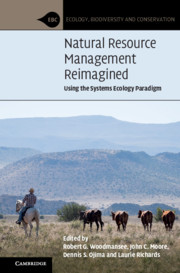103 results
Head and Neck Cancer: United Kingdom National Multidisciplinary Guidelines, Sixth Edition
-
- Journal:
- The Journal of Laryngology & Otology / Volume 138 / Issue S1 / April 2024
- Published online by Cambridge University Press:
- 14 March 2024, pp. S1-S224
- Print publication:
- April 2024
-
- Article
-
- You have access
- Open access
- HTML
- Export citation
Enabling a Paradigm Shift in CryoEM Sample Preparation with chameleon
-
- Journal:
- Microscopy and Microanalysis / Volume 27 / Issue S1 / August 2021
- Published online by Cambridge University Press:
- 30 July 2021, pp. 524-525
- Print publication:
- August 2021
-
- Article
-
- You have access
- Export citation
A history of high-power laser research and development in the United Kingdom
- Part of
-
- Journal:
- High Power Laser Science and Engineering / Volume 9 / 2021
- Published online by Cambridge University Press:
- 27 April 2021, e18
-
- Article
-
- You have access
- Open access
- HTML
- Export citation
Genetic influences on externalizing psychopathology overlap with cognitive functioning and show developmental variation
- Part of
-
- Journal:
- European Psychiatry / Volume 64 / Issue 1 / 2021
- Published online by Cambridge University Press:
- 31 March 2021, e29
-
- Article
-
- You have access
- Open access
- HTML
- Export citation
4 - Five Decades of Modeling Supporting the Systems Ecology Paradigm
-
-
- Book:
- Natural Resource Management Reimagined
- Published online:
- 25 February 2021
- Print publication:
- 11 March 2021, pp 90-130
-
- Chapter
- Export citation
Appendix 10.1 - Examples of Questions Guiding Problem Definition
- from 10 - A Systems Ecology Approach for Community-Based Decision Making
-
- Book:
- Natural Resource Management Reimagined
- Published online:
- 25 February 2021
- Print publication:
- 11 March 2021, pp 320-322
-
- Chapter
- Export citation
Copyright page
-
- Book:
- Natural Resource Management Reimagined
- Published online:
- 25 February 2021
- Print publication:
- 11 March 2021, pp vi-vi
-
- Chapter
- Export citation
1 - The Systems Ecology Paradigm
-
-
- Book:
- Natural Resource Management Reimagined
- Published online:
- 25 February 2021
- Print publication:
- 11 March 2021, pp 1-35
-
- Chapter
- Export citation
Index
-
- Book:
- Natural Resource Management Reimagined
- Published online:
- 25 February 2021
- Print publication:
- 11 March 2021, pp 421-442
-
- Chapter
- Export citation
Appendix 10.4 - Social and Cultural Factors
- from 10 - A Systems Ecology Approach for Community-Based Decision Making
-
- Book:
- Natural Resource Management Reimagined
- Published online:
- 25 February 2021
- Print publication:
- 11 March 2021, pp 325-325
-
- Chapter
- Export citation
Preface
-
-
- Book:
- Natural Resource Management Reimagined
- Published online:
- 25 February 2021
- Print publication:
- 11 March 2021, pp xv-xx
-
- Chapter
- Export citation
Appendix 10.2 - Issues to Be Considered Regarding Biophysical Properties
- from 10 - A Systems Ecology Approach for Community-Based Decision Making
-
- Book:
- Natural Resource Management Reimagined
- Published online:
- 25 February 2021
- Print publication:
- 11 March 2021, pp 323-323
-
- Chapter
- Export citation
Contributors
-
- Book:
- Natural Resource Management Reimagined
- Published online:
- 25 February 2021
- Print publication:
- 11 March 2021, pp x-xiv
-
- Chapter
- Export citation
Appendix 10.3 - Climate, Weather, Energy, and Economic Factors
- from 10 - A Systems Ecology Approach for Community-Based Decision Making
-
- Book:
- Natural Resource Management Reimagined
- Published online:
- 25 February 2021
- Print publication:
- 11 March 2021, pp 324-324
-
- Chapter
- Export citation
Contents
-
- Book:
- Natural Resource Management Reimagined
- Published online:
- 25 February 2021
- Print publication:
- 11 March 2021, pp vii-ix
-
- Chapter
- Export citation
11 - Environmental Literacy
-
-
- Book:
- Natural Resource Management Reimagined
- Published online:
- 25 February 2021
- Print publication:
- 11 March 2021, pp 335-352
-
- Chapter
- Export citation
Appendix 10.5 - Questions Associated with Geographic and Time Scales
- from 10 - A Systems Ecology Approach for Community-Based Decision Making
-
- Book:
- Natural Resource Management Reimagined
- Published online:
- 25 February 2021
- Print publication:
- 11 March 2021, pp 326-326
-
- Chapter
- Export citation
Appendix 10.6 - Analysis of the Human Dimensions of the Rio Puerco Watershed
- from 10 - A Systems Ecology Approach for Community-Based Decision Making
-
- Book:
- Natural Resource Management Reimagined
- Published online:
- 25 February 2021
- Print publication:
- 11 March 2021, pp 327-334
-
- Chapter
- Export citation
12 - Organizational and Administrative Challenges and Innovations
-
-
- Book:
- Natural Resource Management Reimagined
- Published online:
- 25 February 2021
- Print publication:
- 11 March 2021, pp 353-379
-
- Chapter
- Export citation

Natural Resource Management Reimagined
- Using the Systems Ecology Paradigm
-
- Published online:
- 25 February 2021
- Print publication:
- 11 March 2021

